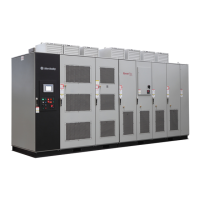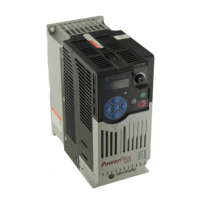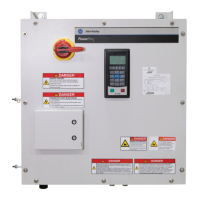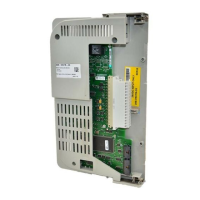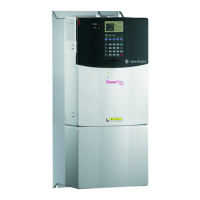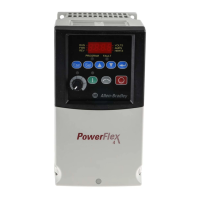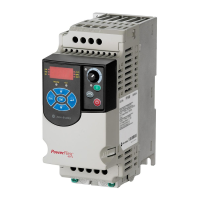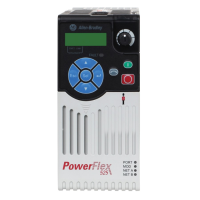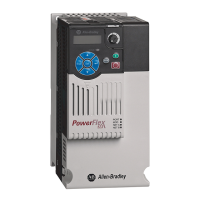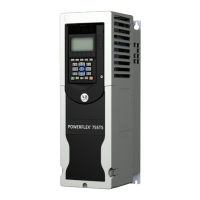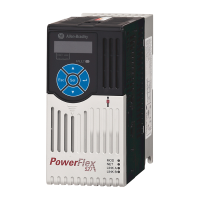Power Loss 2-109
Restart after Power Restoration
If a power loss causes the drive to coast and power recovers the drive will
return to powering the motor if it is in a “run permit” state. The drive is in a
“run permit” state if:
3 wire mode – it is not faulted and if all Enable and Not Stop inputs are
energized.
2 wire mode – it is not faulted and if all Enable, Not Stop, and Run inputs
are energized.
Power Loss Actions
The drive is designed to operate at a nominal bus voltage. When Vbus falls
below this nominal value by a significant amount, action can be taken to
preserve the bus energy and keep the drive logic alive as long as possible.
The drive will have three methods of dealing with low bus voltages:
• “Coast” – Disable the transistors and allow the motor to coast.
• “Inertia” – Decelerate the motor at just the correct rate so that the energy
absorbed from the mechanical load balances the losses.
• “Half Voltage” – Allow the drive to power the motor down to half bus
voltage.If Parameter #184 [Power Loss Mode] = “Coast”
Coast
This is the default mode of operation.
The drive determines a power loss has occurred if the bus voltage drops
below Vtrigger. If the drive is running the inverter output is disabled and the
motor coasts.
The power loss alarm in [Drive Alarm 1] is set and the power loss timer
starts.
The Alarm bit in [Drive Status 1] is set if the Power Loss bit in [Alarm
Config 1] is set.
The drive faults with a F003 – Power Loss Fault if the power loss timer
exceeds [Power Loss Time] and the Power Loss bit in [Fault Config 1] is
set.
The drive faults with a F004 – UnderVoltage fault if the bus voltage falls
below Vmin and the UnderVoltage bit in [Fault Config 1] is set.
The pre-charge relay opens if the bus voltage drops below Vopen and closes
if the bus voltage rises above Vclose
Power Loss
184 [Power Loss Mode]
Sets the reaction to aloss of input power.
Power loss is recognized when:
• DC bus voltage is ≤ 73% of [DC Bus
Memory] and [Power Loss Mode] is
set to “Coast”.
• DC bus voltage is ≤ 82% of [DC Bus
Memory] and [Power Loss Mode] is
set to “Decel”.
Default:
Options:
0
0
1
2
3
4
“Coast”
“Coast”
“Decel”
“Continue”
“Coast Input”
“Decel Input”
013
185
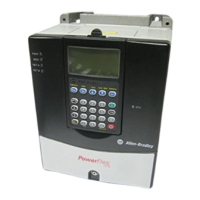
